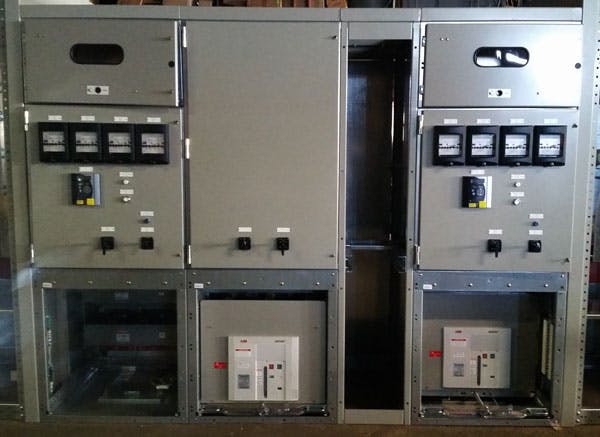Whether you should retrofit or replace old switchgear and panelboards largely depends on five factors: Time; money, how many components are broken, worn, or outdated; the reliability of the existing equipment; and whether any other changes need to be made to the system at large. How much the upgrades are going to cost and how long it will take those upgrades to be implemented are the most obvious factors to consider. However, the other three factors are just as important. It doesn’t matter how much time and money you throw at a solution if it isn’t the right solution for your problem. The entire situation needs to be considered when determining whether to retrofit or replace your switchgear and panelboards, not just the affected systems.
What is Retrofitting?

You’ve probably already assumed that replacing old switchgear and panelboards literally means the old gear is removed and replaced with the latest and greatest model. However, retrofitting isn’t quite as obvious because it can actually refer to two different methods for upgrading your gear. The first definition is the act of incorporating new components into an older system. This simply means that only the broken, worn, or outdated components of the system are replaced. If your switchgear needs new breakers, but is otherwise fine, then the breakers would be retrofitted — new versions would be added to the old system.
The second definition can be a bit more confusing, but it describes the true intention behind retrofitting. This definition is the act of replacing the entire gear with new equipment, designed to fit the existing footprint. If you’re thinking that sounds just like replacement, that’s because it sort of is. The real difference between replacement and retrofitting comes down to that second half of the sentence, “designed to fit the existing footprint.” Retrofitting isn’t merely about upgrading old parts, or even an entire old system; it’s about incorporating new parts into the space the old ones occupied via customization.
It doesn’t matter if you end up replacing all of the gear, if it has to be altered in order to fit into the position of the old gear, then it’s a retrofit.
Benefits of Retrofitting over Replacing

The three main benefits of retrofitting over replacing are cost savings, minimal downtime, and minimal or no need to change the existing gear location. So, how is all of this accomplished?
With retrofitting, the entire system does not necessarily need to be replaced, which is where most of the cost and downtime savings come into play. When you only need to replace part of your switchgear or panelboard, it will generally cost less than replacing the entire thing. Additionally, it takes less time to replace single components than an entire system, even if they need to be custom implemented.
But what about when the entirety of the gear needs to be replaced? Does retrofitting provide any benefits in a situation like that? The short answer is, it depends. If the old system is being replaced with another which has the same dimensions and connection points, then standard replacement with a newer system is probably going to be your best option. However, new gear doesn’t always have the same dimensions or specifications as the old gear which needs replacing, and this can cause placement issues. There simply may not be enough room for the new gear.
Retrofitting is the solution to a problem such as that. When you need your new gear to fit within the exact dimensions of the old gear, retrofitting is the answer. The system will be custom built to the specifications which you provide, and can even be manufactured in multiple pieces to be assembled on-site. After all, sometimes even when premade gear could fit where it needs to be, it simply can’t get there because of its size.
When is a Retrofit the Right Option?

Retrofitting your switchgear and panelboards is the right option when the entirety of the gear does not need to be replaced. The breakers could be wearing out, there may not be enough circuits available, the panels may no longer be reliable, or there may be loose connections. All of these issues would often be best resolved through retrofitting. Additionally, when available space is a constraint, but the entire system needs to be replaced, retrofitting is what you need.
Of course, time and money are also good reasons to choose retrofitting. Sometimes replacing the current system is simply too expensive. Replacement parts may be obsolete or hard to find, and so retrofitting with new parts could be cheaper. Also, installing all new gear also takes longer than retrofitting the worn out parts, so there’s more down time associated with replacement in most cases.
Conclusion
Retrofitting may refer to the incorporation of new parts into old gear. However, it may also refer to the act of custom designing new gear to fit within the physical constraints of the old gear. It also has multiple benefits over replacement, including reduced downtime associated with installation, reduced cost, and a minimal or eliminated need to modify the existing installation location. Many issues do not require a full replacement, which is why retrofitting is an important option to consider.
Retrofit with Penn Panel & Box Company
All retrofits completed by Penn Panel & Box Company are made to the latest standards, improving both the efficiency and safety of the current gear. You will also be left with the assurance that the equipment is going to work as intended. Contact us today for more information on how a retrofit might be the best solution for your switchgear and panelboard needs.
